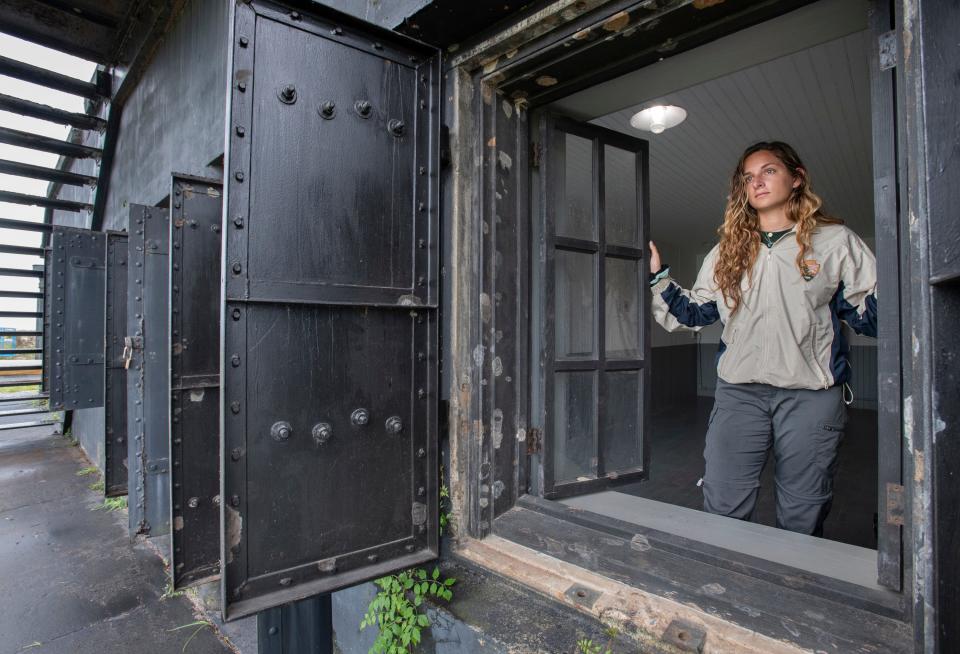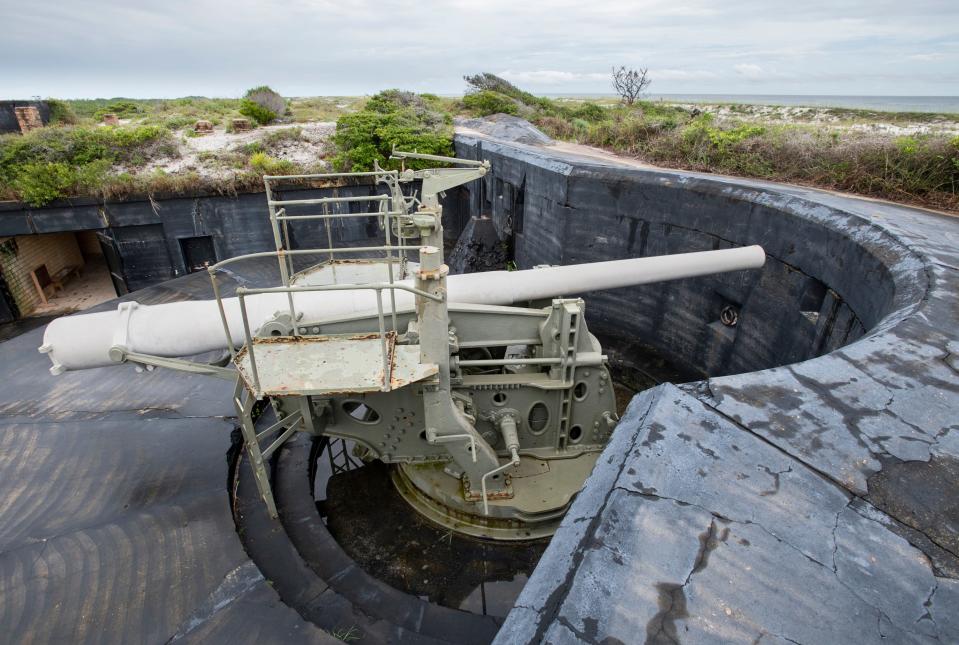Fort Pickens' 'disappearing guns' of Battery Cooper are now open for all to see
After a COVID-related hiatus, people can once again get up close and personal with Fort Pickens' "disappearing guns."
The Gulf Islands National Seashore has announced that the interior of Battery Cooper in Fort Pickens is now open to the public. Battery Cooper is a coastal gun battery on Fort Pickens that originally held two guns on disappearing carriages.
Although the exterior of the battery has remained viewable by visitors, the interior of the bunker was closed off during the pandemic due to COVID-19 restrictions and staffing limitations. However, since many restrictions have been lifted, park officials have added staff and implemented operational changes, allowing the installation to be opened up to the public again.
"Battery Cooper is one of our coastal fortifications that exist here on Gulf Islands National Seashore," said Darrell Echols, superintendent of Gulf Islands National Seashore. "It's part of why the park was established, which is to preserve the cultural history for Gulf Islands National Seashore."
Money for area events: Visit Pensacola awards $172,500 to Pensacola area events for fiscal year 2023
Fort Pickens Road: Fort Pickens Road is notorious for washing out in storms. Is there finally a solution?

Gulf Islands National Seashore officials are planning to put exhibits in Battery Cooper that visitors can see and touch to grasp the history and purpose of the battery.
Casimer Rosiecki, lead park ranger at Gulf Islands National Seashore, said Battery Cooper and the other batteries provide a look into the development of the United States.
"I think they're significant in part because they reflect what the United States military was willing to do in order to ensure the safety of the United States," Rosiecki said. "By defending the shoreline with those coastal batteries, the United States was able to maintain its sovereignty, its independence by being protected from an influence or involved in other conflicts with other nations around the world."
Built in 1906 and named after Lt. George Cooper, an officer killed in the Philippine American War in 1900, the battery is one of the four "disappearing guns" on Fort Pickens, so named because the guns were mounted on carriages that could be lowered below the battery walls when loading or not in use, then raised up over the wall when fired.
It is one of the 15 coastal batteries within the Gulf Islands National Seashore. These concrete coastal batteries were designed and constructed in the late 1800s and early 1900s by the U.S. Army Corps of Engineers to modernize harbor defenses, since it was deemed forts like Fort Pickens and Fort Barrancas were obsolete.
When William Howard Taft became Secretary of War in 1904, he initiated an effort to modernize the batteries, including adding then-novel technologies such as telephones and generators. All of the local batteries were planned out so that they could support one another in the defense of the harbor and what would become the Naval Air Station Pensacola in 1914.

"We can see how the United States was evolving, was changing, was modernizing and growing to become the world power that it is," Rosiecki said. "By embracing new theories, new ideas, new construction materials, the United States was able able to keep pace with other nations that were also growing into power."
In 1917, the guns of Battery Cooper were removed to support the troops in France in World War I and taken out of operation in the same year. For 20 years, there were no guns at Battery Cooper, until rising tensions during World War II led to four 155 mm guns being emplaced on the seaside of the battery. The battery was in use until it was deactivated in 1945.
The National Park Service installed the current guns in 1976, which are the same types as the originals.
Park officials will work on repainting the gun and battery to keep up with the maintenance. There is also a metal preservation project planned to deal with the deteriorating stairs of the battery that may create unsafe walking conditions.
Battery Cooper will be open from 10 a.m. to noon and 1-3 p.m. Monday through Friday in July. Visitors are encouraged to arrive early due to limited parking.
To learn more about ranger programs and other events, visit nps.gov/guis.
This article originally appeared on Pensacola News Journal: Battery Cooper interior at Fort Pickens opens to public at Gulf Islands

